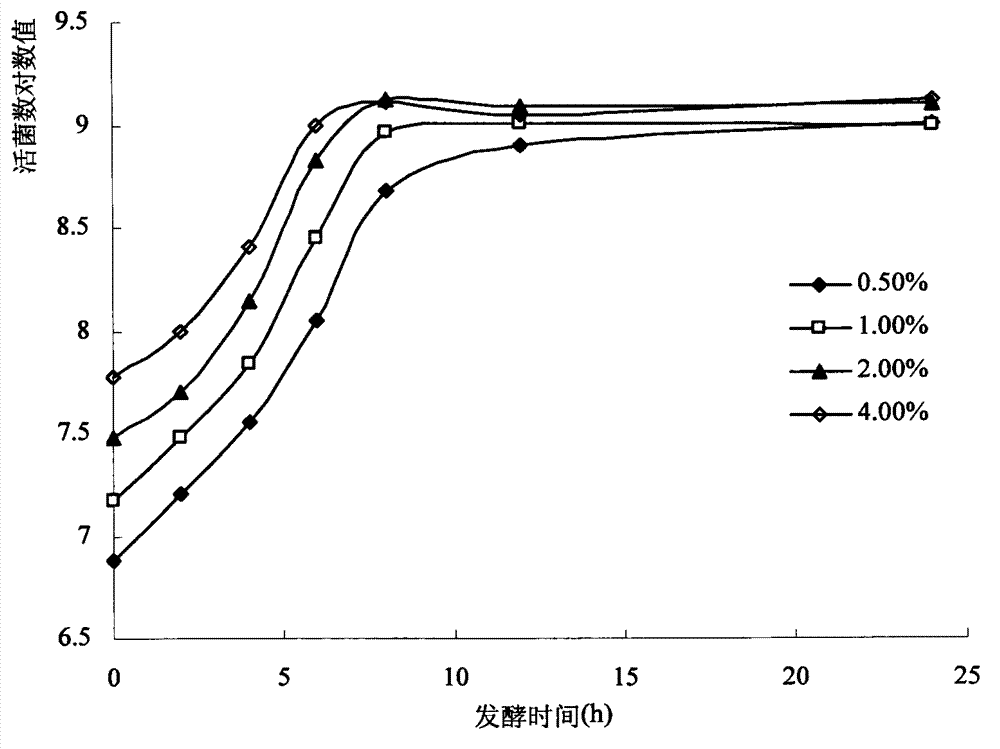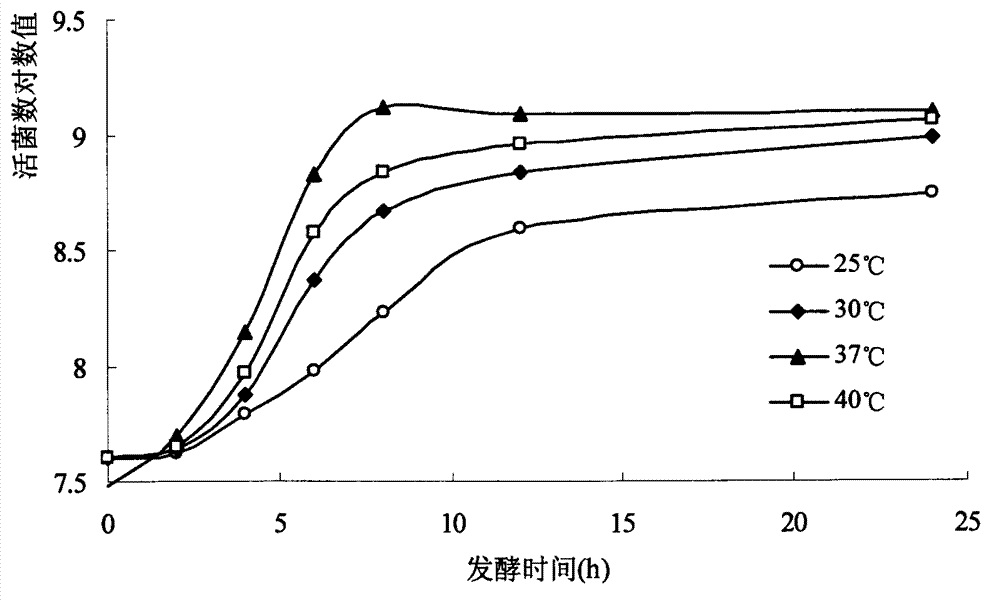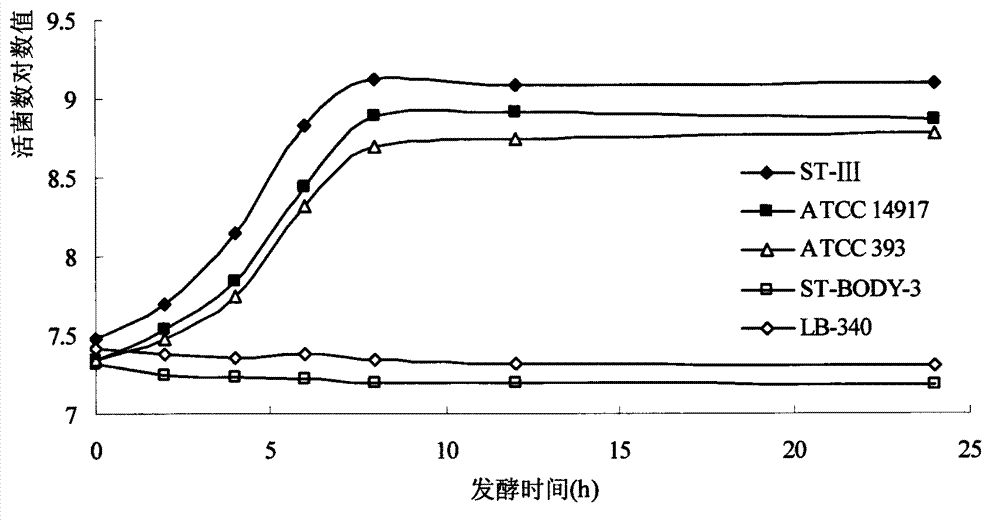Purely natural and low-cost lactobacillus (Lb.) plantarum ST-III culture method and products thereof, and application of products
A technology of Lactobacillus plantarum and cultivation methods, applied in the direction of microorganism-based methods, biochemical equipment and methods, bacteria, etc., can solve the problems of long fermentation cycle, increased production costs, and uncertain nutritional components, and achieve the reduction of scientific research costs, Strong acid resistance and good health effects
- Summary
- Abstract
- Description
- Claims
- Application Information
AI Technical Summary
Problems solved by technology
Method used
Image
Examples
Embodiment 1
[0031] Example 1 Lactobacillus plantarum ST-III fermentation tomato juice condition optimization
[0032] 1) Materials and methods
[0033]Preparation of seeds (fermentation strains): L.plantarum ST-III (CGMCC No.0847), L.plantarum ATCC 14917 (purchased from ATCC), L.casei ATCC 393 (purchased from ATCC), L.bulgaricus LB- 340 (provided by Danisco) was dissolved in a small amount of sterile distilled water, and a ring was drawn on the MRS solid medium (Merck Co., Germany) with an inoculation loop, cultured anaerobically at 37°C for 24 hours, and then taken out with an inoculation loop. Pick a single colony from the ring and put it into 1mL MRS liquid (Merck Co. Germany), use a vortex shaker to evenly disperse the colony in the liquid medium, take it out after anaerobic cultivation at 37°C for 24 hours, and inoculum with 2% (v / v) Inoculate in 50mL MRS liquid, culture at 37°C for 24 hours, centrifuge the culture at 9,000rpm for 10 minutes, discard the supernatant, wash the bacter...
Embodiment 2
[0043] The fermentation characteristics of embodiment 2 different lactic acid bacteria in tomato juice
[0044] The seeds of L.plantarum ST-III, L.plantarum ATCC 14917, L.casei ATCC 393, L.bulgaricus LB-340, S.thermophilus ST-BODY-3 (working starter prepared by the above-mentioned method) were mixed with 2% ( v / v) Inoculum amount is aseptically inserted into the pure tomato juice medium prepared by the above method, and the number of live bacteria of Lactobacillus plantarum after inoculation is 2.00~4.00×10 7 cfu / ml (colony forming unit per milliliter), cultured at 37°C for 24h, and the number of viable bacteria was measured by the above-mentioned counting method for the fermented broth cultured for different periods of time.
[0045] The logarithmic value of the total number of viable bacteria in the fermentation broth of L.plantarum ST-III is 7.48 to 9.12, (that is, the total number of viable bacteria is 3.00×10 7 ~1.32×10 9 cfu / mL), the logarithmic value of the total numb...
Embodiment 3
[0046] Fermentation effect comparison of embodiment 3 tomato juice enrichment base, MRS medium, oat medium
[0047] The seeds of Lactobacillus plantarum ST-III (the working starter prepared by the above method) were aseptically inserted into the pure tomato juice medium, MRS medium, and oat medium prepared by the above method with a 2% (v / v) inoculum amount. Among them, the number of live bacteria of Lactobacillus plantarum after inoculation was 3.00~4.00×10 7 cfu / ml (colony forming unit per milliliter), were placed in static culture at 37°C for 24 hours, and the number of live bacteria in the fermented liquid cultured for different time was measured according to the above-mentioned counting method, and compared with Lactobacillus plantarum ST-III in different enrichment base materials Fermentation performance in .
[0048] The logarithmic value of the total number of viable bacteria in the fermented liquid obtained by Lactobacillus plantarum ST-III fermenting the pure tomato...
PUM
| Property | Measurement | Unit |
|---|---|---|
| Viable count | aaaaa | aaaaa |
Abstract
Description
Claims
Application Information
 Login to View More
Login to View More - R&D
- Intellectual Property
- Life Sciences
- Materials
- Tech Scout
- Unparalleled Data Quality
- Higher Quality Content
- 60% Fewer Hallucinations
Browse by: Latest US Patents, China's latest patents, Technical Efficacy Thesaurus, Application Domain, Technology Topic, Popular Technical Reports.
© 2025 PatSnap. All rights reserved.Legal|Privacy policy|Modern Slavery Act Transparency Statement|Sitemap|About US| Contact US: help@patsnap.com



